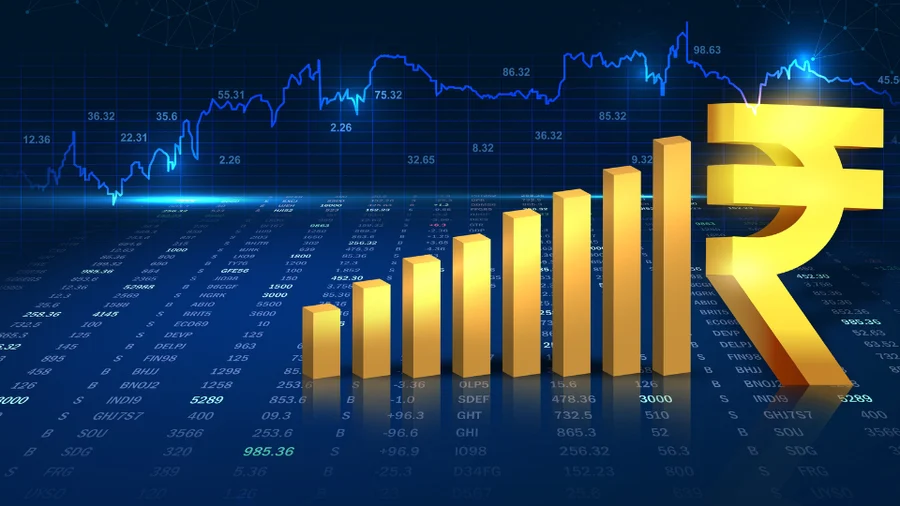
The Indian stock market in 2025 has exhibited a diverse sectoral performance, reflecting the complexities of the global and domestic economic landscape. While certain sectors have demonstrated resilience and growth, others have faced challenges, influenced by factors such as geopolitical tensions, global economic conditions, and domestic policy measures.
Financial Services and Banking: A Mixed Outlook
The financial services sector has shown a varied performance. The Nifty Financial Services Index reported a 13.98% return over the past year, indicating a positive trend. However, individual stocks within the sector have experienced fluctuations. For instance, HDFC Bank’s stock gained 1% recently, providing some stability to the market. Conversely, Bajaj Finance’s stock declined by 5.4% due to concerns over weak pre-provision profits and increased credit costs.
Information Technology: Facing Headwinds
The Information Technology (IT) sector has encountered challenges in 2025. The Nifty IT Index has underperformed, with a 1.16% return over the past year. Despite reporting higher fourth-quarter profits, companies like Bajaj Finance and IndusInd Bank have faced stock declines due to concerns over credit costs and accounting issues. Additionally, geopolitical tensions have added to the sector’s volatility.
Healthcare and Pharmaceuticals: Sustained Growth
The healthcare and pharmaceutical sectors have continued their upward trajectory. The Nifty Healthcare Index gained 6.75% over the past year, driven by rising healthcare spending and strong pharmaceutical exports. Companies such as Dr. Reddy’s Laboratories, Cipla, and Sun Pharmaceutical Industries have capitalized on increased global demand for generic drugs and advancements in biotechnology.
Consumer Goods: Resilience Amidst Challenges
The consumer goods sector has demonstrated resilience, with the Nifty FMCG Index reporting a 4.88% return over the past year. Companies like Hindustan Unilever have benefited from rural recovery and premiumization, with volume growth turning positive after several quarters. However, challenges persist, including inflationary pressures and supply chain disruptions.
Energy and Oil & Gas: Volatility and Uncertainty
The energy and oil & gas sectors have experienced volatility. The Nifty Oil & Gas Index declined by 0.41% over the past year, influenced by global oil price fluctuations and domestic policy changes. Companies in these sectors have faced challenges related to cost pressures and regulatory uncertainties.
Real Estate and Infrastructure: Mixed Performance
The real estate sector has shown mixed performance. The Nifty Realty Index declined by 12.13% over the past year, impacted by rising interest rates and regulatory challenges. In contrast, the infrastructure sector has seen growth, driven by increased government spending on infrastructure projects and urban development initiatives.
Metals and Auto: Sectoral Divergence
The metals sector has outperformed, with the Nifty Metal Index gaining 4.50% over the past year. This growth is attributed to increased demand for metals in construction and manufacturing sectors. Conversely, the auto sector has faced challenges, with the Nifty Auto Index reporting a 1.16% return, influenced by supply chain disruptions and changing consumer preferences.
Retail and Small-Cap Stocks: Investor Interest
Retail investors have shown increased interest in small-cap stocks, with the Nifty Smallcap 250 Index gaining 35.2% over the past year. Companies like PTC Industries and Goldiam International have attracted attention due to their strong earnings growth and strategic initiatives. However, these stocks also carry higher risks, necessitating cautious investment strategies.
Conclusion: Navigating a Complex Market Landscape
The Indian stock market in 2025 presents a complex landscape, with varied sectoral performances influenced by a multitude of factors. Investors are advised to conduct thorough research and consider diversifying their portfolios to navigate the challenges and capitalize on the opportunities presented by different sectors. Staying informed about global economic trends, domestic policy developments, and sector-specific dynamics will be crucial for making informed investment decisions in this evolving market environment.









































Leave a Reply